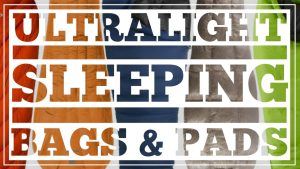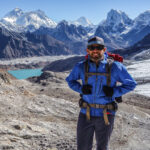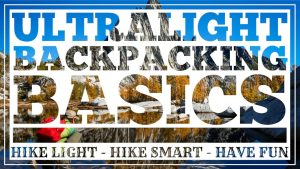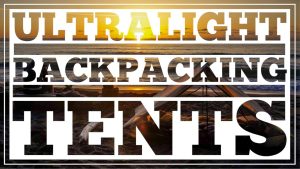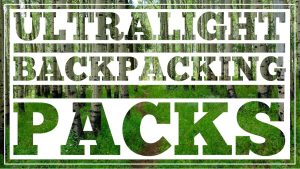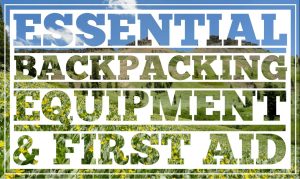Ultralight Water Purification – Episode 10
We independently test everything we recommend.
Buying through links on our site supports our work.
Lightweight Water Purification
Water presents an interesting dilemma for hikers. On one hand, it’s one of the most important items you’ll carry to keep yourself well hydrated and safe on the trail. On the other hand, it’s also one of the heaviest items you’ll carry in your pack.
One liter of water weighs over two pounds, so you’ll want to be careful with how much extra water you choose to bring on the trail.
It’s very important to know where your next water source will be on the trail and to carry enough water to get there safely. If you’re worried about a water source being dry, it’s always a good idea to carry extra water. The weight is almost always worth it, even just for piece of mind.
Staying well hydrated on the trail will help you to regulate your body temperature and prevent injury.When you arrive at a water source along the trail, it’s a good idea to drink a lot of water at that time. That way you’ll stay well hydrated and you won’t have to carry as much water in your pack.
Prevention
Your water purification method will be a very personal choice. Some hikers choose to drink water straight from streams without purifying, but I’m definitely not one of them. I recommend purifying all drinking water and with good reason.
Some of the hype paid to Giardia is a bit overkill, but I can tell you from experience, getting Giardia is not a lot of fun. That’s why I try to limit my risk to parasites at all costs.
Proper hygiene is another really important part of staying healthy on the trail. Often times people blame water when they get sick, but it’s more likely that their hands were dirty. Make sure you wash your hands regularly while you’re backpacking, especially before eating food and after bathroom breaks.
Purification
There are three main lightweight water purification options. Water filters, UV light treatments, and chemical treatments are the most common options. Each choice will come with a range of pros and cons, and it’s generally good to have a lightweight backup.
Check out our Water Filter Guide if you’d like some guidance on the best water purifiers on the market.
Water Filters
The three main types of water filters are gravity filters, pump filters, and squeeze filters. They work by taking water directly from a source, filtering out any harmful microorganisms, and spitting out clean water that backpackers can drink immediately.
Hand pump filters work well and are a common choice among lightweight hikers. They do require a bit of pumping, which can get tedious with big groups.
Squeeze filters are very similar to hand pump filters, except you’ll squeeze the water through your filter, rather than pumping. This relatively new tool is much lighter than traditional filter options and provides a lot of flexibility.
With a gravity filter all you have to do is fill up a bag of water, hang it up, and let the water filter through by itself. This can be a very convenient option, especially for large groups.
Filter Pros:
- Drink clean water immediately
- Lightweight
- Easy to use
- Quick
- Cost effective over time
- No chemicals
Filter Cons:
- Some are bulky and heavy
- Some are expensive
- Pumping/squeezing may be required
- Maintenance required (back-flushing, filter replacing)
UV Light Purifiers
UV light filters work by blasting microbes in your water with UV light, which will neutralize them and allow you to drink the water safely in just a couple of minutes.
UV Pros:
- Quick
- Convenient
- Easy to use
- Lighter than most filters
- No chemicals
UV Cons:
- Expensive
- Can be fussy
- Expensive batteries
- Hard to find battery types
- Can drain batteries quickly
Chemical Treatment
Chemical treatments are just about the lightest option out there. Because of that, they’re a common option for ultralight backpackers and thru-hikers (the sawyer mini is another popular option for UL hikers).
Chemical treatments work by putting pills or liquid directly into your drinking water that will kill off any organisms living in the water.
Two of the most common chemical treatments choices are chlorine dioxide and iodine. Some hikers also use household bleach as a water purifier, but that’s an option that should only be used for emergency situations.
In recent years, chlorine dioxide treatments have become much more popular than iodine and bleach. The main reason for this is that they’re effective against Cryptosporidium, which iodine and bleach are not.
Cryptosporidium and Giardia are the two main bugs to protect against in North America, so you’ll definitely want a water treatment method that’s effective against them.
Chemical Pros:
- Lightweight
- Easy to use
- Low initial cost
- Compact
Hike while it’s working
Chemical Cons:
- Putting chemicals in your body
- Slight chemical taste
- Wait time (30min-4 hours)
Final Word
My personal favorite is to use a gravity filter when I’m backpacking with a large group and to use a lightweight filter (sawyer mini) when I’m trying to go ultralight. Check out my Water Filter Guide to see all my favorite picks.
Whichever method you choose, make sure to stay safe and purify your drinking water on the trail.
Hike light, hike smart, and have fun.
POPULAR CLEVERHIKER CONTENT
- CleverHiker Top Picks
- Best Backpacking Tents
- Best Budget Tents & Best Ultralight Tents
- Best Backpacks & Stoves
- Best Sleeping Bags & Sleeping Pads
- Essential Trail Skills Videos
MORE EPISODES IN THIS SERIES
View all